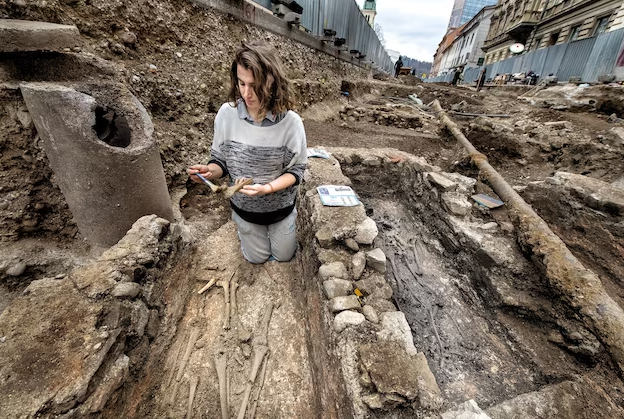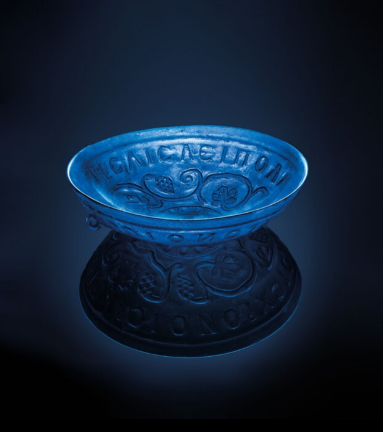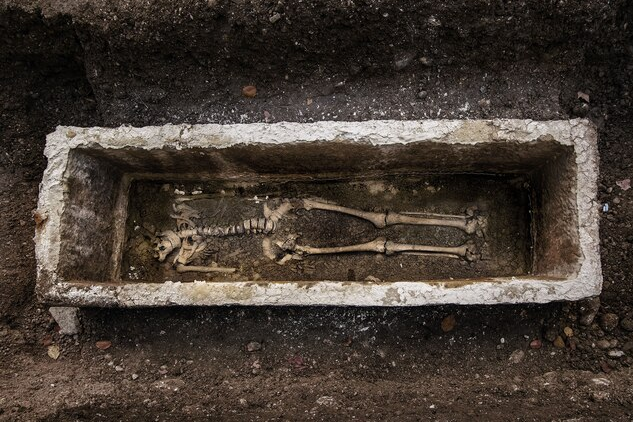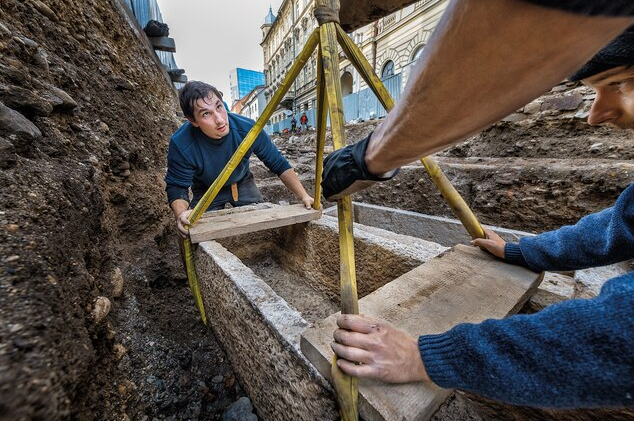Archaeologists puzzle over mystery woman in early Christian cemetery
Buried beside a stunning blue glass drinking bowl, the woman may have been the first interred at the Roman site, with others eager to be near her in the afterlife.
When a large construction project was launched on Gosposvetska Street in downtown Ljubljana in August 2017, Slovenian archaeologists in this ancient city naturally anticipated some interesting discoveries. But what they didn’t expect to find was an unusual glimpse into an early Christian community, and the important—and as yet unknown—woman its members chose to spend their afterlives close to.
This 1,700-year-old transparent blue glass bowl, a little more than eight inches in diameter, was found buried next to the woman at the center of the cemetery. Its Greek inscription reads: “Drink to live forever, for many years!”
PHOTOGRAPH BY ARNE HODALIČ AND KATJA BIDOVEC
The capital of this small central European country was established as the Roman settlement of Emona some 2,000 years ago, populated by thousands of colonists driven out of northern Italy by land shortages, and joined by veterans of the wars that helped to establish the Empire. From previous excavations in the area, the archaeologists knew that part of a Roman cemetery likely lay under Gosposvetska Street, and that more ancient graves would be uncovered.
a skeleton in a cemetery
More than 300 burials have been discovered beneath Gosposvetska Street, providing scientists with the opportunity to better understand how the residents of Roman Emona lived and died.
PHOTOGRAPH BY ARNE HODALIČ AND KATJA BIDOVEC
The excavations ultimately revealed a late-Roman cemetery complex containing more than 350 burials—ranging from simple graves and sarcophagi to family mausoleums—centered around the burial chapel of what appears to be a very important woman, according to Slovenian archaeologist Andrej Gaspari. The local Christian community flourished after the last major state persecution under Emperor Diocletian in the early 300s, and ended only with the destruction of Emona by the Huns in the fifth century A.D.
archaeologists relocating a sarcophagus
Only the wealthy citizens of Emona could afford to be buried in sarcophagi, which were chiseled from limestone quarried from Moravče, about 20 miles to the east.
PHOTOGRAPH BY ARNE HODALIČ AND KATJA BIDOVEC
The most stunning artifact recovered beneath Gosposvetska Street was a transparent blue glass bowl found next to the woman’s body. The 1,700-year old vessel is decorated on the outside with grapes, and vine leafs and tendrils. A Greek inscription on the inside of the bowl instructs the owner to “Drink to live forever, for many years!”
This exquisite drinking bowl could have been used in both regular daily life as well as for burial ceremonies, and an analysis of its chemical composition points to its manufacture somewhere in the eastern Mediterranean region. The grapevine decorations have their role in the Christian Eucharist and Communion, but have their origins in motifs associated with Dionysus, the pagan god of wine and ecstasy.
Archaeologists are also interested in how the woman’s tomb developed over time. It seems that possibly within a decade of her burial, her square chapel was demolished and a larger (30-by-40-foot) structure was built to enclose her tomb. Around the new structure and inside it, Emona’s Christian community began to practice a burial practice known as ad sanctos, in which the deceased are interred near the tombs of saints and other remains considered holy.
And who was the woman honored in the chapel? If archaeologists are correct that she was the first person buried in the cemetery under Gosposvetska Street and that her grave played the central role in the necropolis, she was likely a very distinguished person in Roman Emona. Her social status, religious affiliation, and place of birth, however, are only a matter of speculation for now. Planned analysis of her physical remains should hopefully answer some of those questions in the future. In the meantime, most of the valuable finds from Gosposvetska Street are now display in the treasury of the City Museum of Ljubljana.
Hits: 0






